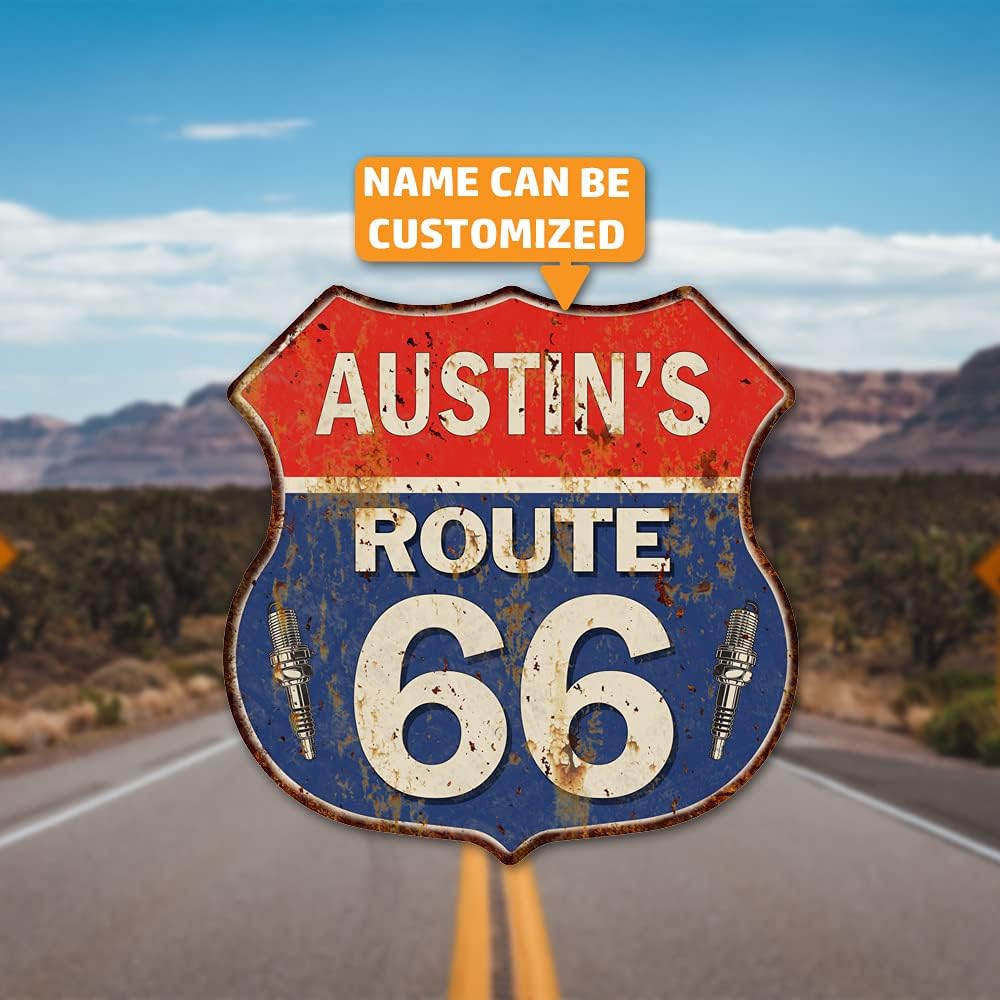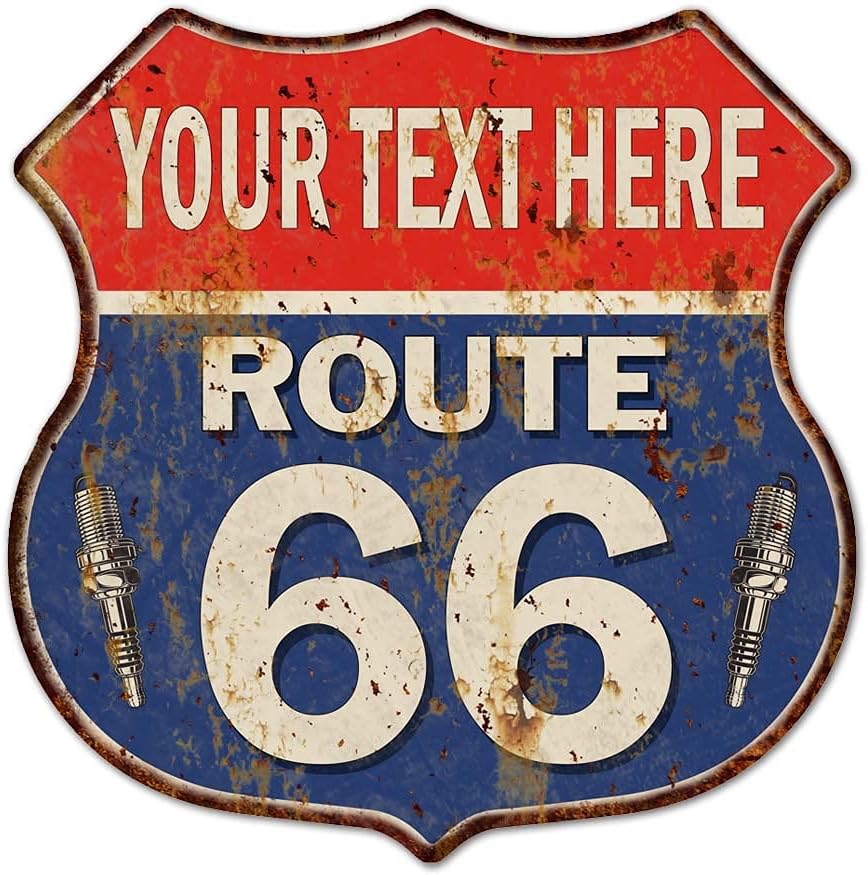Route 66 Travel in Illinois
How to Experience Route 66 in Illinois takes a journey into the heart of America’s nostalgic past. Known as the “Mother Road,” Route 66 begins its 2,400-mile trek to California right in downtown Chicago, where historic signs near Adams Street mark the starting point. From there, travelers quickly leave the city’s skyscrapers behind and enter a landscape dotted with charming small towns, vintage diners, quirky roadside attractions, and restored gas stations. Towns like Joliet, Pontiac, and Springfield celebrate their Route 66 heritage with museums, murals, and classic architecture that give visitors a taste of mid-20th-century Americana. Highlights include the Gemini Giant in Wilmington, the lively Route 66 Hall of Fame and Museum in Pontiac, and the historic Cozy Dog Drive-In in Springfield, said to be the birthplace of the corn dog on a stick.
Driving Route 66 across Illinois offers a rich blend of history, scenery, and culture. You’ll encounter everything from art deco theaters and neon motel signs to the rolling farmland and open skies of central Illinois. Many travelers also make stops at iconic landmarks like the Ariston Café in Litchfield—one of the oldest restaurants on Route 66—or take a detour to visit Abraham Lincoln’s historic sites in Springfield.
Whether you’re after a leisurely cruise filled with classic photo ops or a deeper dive into the stories of America’s road-tripping heyday, Illinois’ stretch of Route 66 delivers an unforgettable slice of the old highway’s enduring magic.
About Illinois
State Facts
Here’s a list of 15 facts about Illinois you might find interesting:
- Illinois is known as the “Land of Lincoln” — it’s where Abraham Lincoln spent much of his life and launched his political career.
- Chicago is the largest city in Illinois and the third-largest city in the United States.
- Springfield is the state capital, not Chicago!
- Illinois was admitted to the Union on December 3, 1818, becoming the 21st state.
- The first McDonald’s restaurant opened in Des Plaines, Illinois, in 1955 (though McDonald’s as a company started earlier in California).
- The world’s first skyscraper, the Home Insurance Building, was built in Chicago in 1885.
- Illinois is a major transportation hub, often called the “crossroads of America,” with O’Hare International Airport being one of the busiest in the world.
- Route 66 begins in Chicago, at the corner of Adams Street and Michigan Avenue.
- Cahokia Mounds, near Collinsville, contains the remains of the largest pre-Columbian city north of Mexico.
- Illinois has a diverse geography, including flat prairies, rolling hills, wetlands, and forests.
- The state nickname is “The Prairie State”, reflecting its historic landscape.
- Illinois is a major agricultural state, ranking high in the production of corn and soybeans.
- The Sears Tower (now Willis Tower) in Chicago was the tallest building in the world from 1973 to 1998.
- The Great Chicago Fire of 1871 led to a massive rebuilding effort that shaped the modern city.
- Famous people from Illinois include Walt Disney, Michelle Obama, Ernest Hemingway, and Oprah Winfrey.
The History of Route 66 in Illinois
Route 66 was officially established on November 11, 1926, and Illinois played a crucial role in its development and early history. Stretching about 300 miles from Chicago to the Missouri border near St. Louis, Illinois was both the starting point of Route 66 and one of the first states to have the road fully paved, which helped shape its legend as the “Mother Road.”
The Birth of Route 66 in Illinois
Illinois’s involvement in Route 66’s creation stemmed from a combination of existing roads and new alignments. Much of the original path through Illinois was based on older roads like the Pontiac Trail, which connected Chicago and St. Louis. Key figures like Cyrus Avery from Oklahoma and Arthur Gillette from Illinois helped lobby for a national highway system that would link rural communities to larger urban centers.
The route began in downtown Chicago, originally at Michigan Avenue and Jackson Boulevard. In later years, the starting point was often referred to as being at Lake Shore Drive. From there, it headed southwest, cutting across the flat and fertile prairies of Illinois.
Early Years and Development
By 1929, Illinois had completed the paving of its entire portion of Route 66, making it the first state to do so. This provided a major boost to automobile travel during a time when much of the country’s roadways were still unpaved. The newly paved route made Illinois a key thoroughfare for travelers heading west, particularly during the Great Depression, when thousands of families migrated westward to escape poverty and the Dust Bowl.
During this period, roadside businesses flourished along the Illinois corridor. Towns like Joliet, Dwight, Normal, Pontiac, Bloomington, Lincoln, Springfield, and Litchfield saw a boom in gas stations, motels, diners, and tourist attractions, all designed to serve the steady stream of motorists.
World War II and Postwar Boom
During World War II, Route 66 became a vital military route, transporting troops and supplies. After the war, with the rise of automobile ownership and the expansion of suburban America, Route 66 evolved into a symbol of freedom and mobility. Families used the road for vacation travel, contributing to the popularity of roadside attractions like the Gemini Giant in Wilmington and Soulsby’s Service Station in Mount Olive.
In Illinois, Springfield, the state capital, became an especially notable stop, offering historic attractions like Lincoln’s Home and the Old State Capitol. Smaller towns developed quirky landmarks and local traditions to draw in travelers, adding to the road’s mythos.
Changes and Decline
Starting in the 1950s, the development of the Interstate Highway System — especially Interstate 55, which closely paralleled and eventually replaced much of Route 66 in Illinois — signaled the beginning of the end for the historic road. As faster and more direct highways opened, Route 66 was gradually bypassed, and businesses along the old road began to decline.
By 1977, Illinois became the first state to completely decommission its portion of Route 66, with the road officially removed from the national highway system in 1985. Despite this, many sections of the old road remained drivable and were preserved by local communities and Route 66 enthusiasts.
Preservation and Revival
Starting in the 1980s and continuing into the 21st century, there has been a strong movement to preserve and promote the historic character of Route 66. In Illinois, this effort has been especially vibrant. Several organizations, such as the Illinois Route 66 Association (founded in 1989), have worked to protect historic sites and encourage tourism along the old highway.
Today, travelers can explore numerous restored landmarks, including:
- The Route 66 Hall of Fame and Museum in Pontiac
- The Cozy Dog Drive-In in Springfield, said to be the birthplace of the corn dog
- The Ariston Café in Litchfield, one of the oldest continually operating Route 66 restaurants
- Ambler’s Texaco Gas Station in Dwight, meticulously restored to its historic appearance
- The Gemini Giant in Wilmington, recently moved to a permanent location.
Illinois has also embraced Route 66 through events like car shows, festivals, and historical tours, helping to keep the spirit of the Mother Road alive for new generations.
Geography Along Route 66 in Illinois
The geography along Route 66 in Illinois is defined by its gentle, rolling landscapes and fertile farmland. Beginning in the bustling urban environment of Chicago, the route quickly transitions into the open plains of central Illinois, where wide fields of corn and soybeans stretch to the horizon. Small towns, historic main streets, and patches of woodlands dot the scenery, offering travelers a view into classic Midwestern Americana. The terrain remains mostly flat, with only slight rises and river valleys adding variation as Route 66 makes its way southwest toward the Mississippi River near St. Louis.
Climate Along Route 66 in Illinois
Traveling through Illinois on Route 66 offers a journey through a region characterized by a humid continental climate, marked by four distinct seasons: hot, humid summers and cold, snowy winters.
Summer: Temperatures frequently exceed 85°F (29°C), with occasional heatwaves pushing them above 90°F (32°C). High humidity levels can make it feel even warmer. Thunderstorms are common during this season, occasionally leading to flash flooding.
Winter: Winters are cold, with average lows below freezing and occasional snowfall. While snow accumulation is generally light, icy conditions can occur, especially in the northern parts of the state.
Spring and Fall: These transitional seasons offer milder temperatures and are considered ideal for travel. However, spring is also the peak of severe weather season, with an increased risk of tornadoes and thunderstorms.
For travelers planning a Route 66 road trip through Illinois, it’s advisable to prepare for rapidly changing weather conditions and to stay informed about local forecasts, especially during the spring and summer months when severe weather is more prevalent.
Where to Stay in Illinois
Lodging in Illinois by city.
Towns Located on Route 66 in Illinois
List of Route 66 Towns in Illinois from east to west
- Chicago
- Berwyn
- Cicero
- Oak Park
- Burr Ridge
- Joliet
- Elwood
- Wilmington
- Braidwood
- Coal City
- Springfield
- Carlinville
- Litchfield
- Gillespie
- Staunton
- Collinsville
- Edwardsville
- Madison
- St. Louis
A List of Route 66 Attractions in Illinois
- Chicago – The Route 66 Begin Sign
Located at Grant Park in Chicago, this sign marks the official beginning of Route 66, making it a must-see for travelers starting their journey along the historic highway. - Chicago – The Route 66 Visitor Center
Situated near the Chicago Cultural Center, this center offers Route 66 maps, historical information, and souvenirs to kick off your trip. - Willowbrook – The Willowbrook Ballroom
A historic ballroom with a rich legacy, the Willowbrook Ballroom has been hosting events since the 1920s, and it’s a classic stop for those interested in the cultural history of Route 66. - Bourbonnais – The Kankakee River
The Kankakee River area offers scenic views and a chance to explore nature along the historic highway, a peaceful spot to reflect on the journey ahead. - Pontiac – The Route 66 Museum
This museum in Pontiac offers an in-depth look at the history of Route 66, with vintage cars, memorabilia, and exhibits about the highway’s impact on local communities. - Pontiac – The Route 66 Mural
A large mural in Pontiac celebrates the history and landmarks of Route 66, making it a great spot for photos and reflection. - Pontiac – The Pontiac-Oakland Auto Museum
This museum showcases classic cars, with a focus on Pontiac and Oakland vehicles, adding to the automotive heritage of Route 66. - Normal – The Route 66 Hall of Fame & Museum
A fascinating museum that features a collection of Route 66 memorabilia, vintage signs, and photos, offering insight into the highway’s cultural significance. - Lincoln – The Lincoln Depot
This historic train station in Lincoln was the site of Abraham Lincoln’s departure for Washington D.C. in 1861, adding a layer of history to the Route 66 experience. - Atlanta – The Palms Grill Café
A classic Route 66 diner, The Palms Grill Café in Atlanta offers delicious food in a nostalgic, vintage setting with a Route 66 theme. - Litchfield – The Litchfield Museum & Route 66 Welcome Center
This museum offers Route 66 memorabilia, and the welcome center is a great place to stop for information and history about the road in Illinois. - Carlinville – The Carlinville Courthouse
This historic courthouse is a part of the town’s Route 66 history, located just off the highway and offering a glimpse into the area’s past. - Staunton – The Route 66 Park
Located in Staunton, this park celebrates Route 66 with a monument and historical information about the highway’s role in the community. - Troy – The Gateway Classic Cars Museum
A car museum located in Troy, featuring classic cars that highlight the evolution of automotive history along Route 66. - Edwardsville – The Edwardsville Historic District
A beautiful historic district with charming shops, restaurants, and architecture, offering a relaxed atmosphere to explore the history of Route 66 in the area. - The Chain of Rocks Bridge – The bridge spans the Mississippi from Madison, Illinois to St. Louis, Missouri.
- Wilmington – The Gemini Giant – The Giant was recently purchased by the Joliet Area Historical Museum and loaned to the City of Wilmington for display at a new permanent location.
Illinois’ stretch of Route 66 offers a wonderful mix of history, roadside attractions, quirky stops, and cultural landmarks, making it a great place to begin or experience the “Main Street of America.” Whether you’re interested in cars, history, food, or just enjoying the scenic landscape, Illinois has something to offer every Route 66 traveler.
Route 66 Attractions in Illinois on the National Register
- Lou Mitchell’s Restaurant
Chicago, IL- Famous starting point for Route 66 travelers, established in 1923.
- Route 66 Hall of Fame and Museum (former Dixie Truckers Home Site)
McLean, IL- Historic truck stop complex; now a museum dedicated to Route 66.
- Polk-A-Dot Drive In
Braidwood, IL- Vintage 1950s-style diner famous for its neon signs and fiberglass figures.
- Standard Oil Gas Station
Odell, IL- Restored 1930s gas station, an iconic photo stop for Route 66 travelers.
- Ambler’s Texaco Gas Station
Dwight, IL- One of the longest-operating gas stations on Route 66 (1933–1999).
- Old Log Cabin Inn and Restaurant
Pontiac, IL- Early roadside restaurant, famous for originally serving both directions of Route 66 by rotating the building.
- Mill on 66 (The Mill Restaurant)
Lincoln, IL- Historic 1929 restaurant with unique Dutch-style architecture.
- Ariston Café
Litchfield, IL- One of the oldest restaurants on Route 66 (since 1924), continuously operating.
- DeCamp Station
Staunton, IL- Former dance hall and bar that served travelers along the Mother Road.
- Henry’s Rabbit Ranch
Staunton, IL- A modern homage to Route 66 featuring VW Rabbits and actual rabbits; recognized for its cultural contribution, though its individual historic designation is debated.
- Chain of Rocks Bridge
near Granite City, IL- Historic 1929 bridge known for its unique 22-degree bend, originally part of Route 66 across the Mississippi River.
- Cozy Dog Drive In (Historic significance recognized, though not individually NRHP listed yet)
Springfield, IL- Home of the original corn dog-on-a-stick, crucial to Route 66 culture.
- Illinois State Police Office (District 6 Headquarters)
Pontiac, IL- Historic law enforcement building associated with Route 66 history.
Notes:
- Some structures, like Cozy Dog, are locally landmarked and recognized culturally but are not individually on the National Register.
- Several sections of Historic Route 66 (roadbed segments) between Springfield and Edwardsville are themselves listed as historic districts under Route 66 Multiple Property Submissions (MPS).
Other Sites: Hotels, Districts, and More
Classic Route 66 Motels
Still-Operating Vintage Motels
- Route 66 Hotel and Conference Center
- Address: 625 E Saint Joseph St, Springfield, IL 62703
- Notes: Originally a 1950s Holiday Inn — it’s been renovated, but keeps lots of vintage Route 66 memorabilia and spirit.
- CarlinVilla Motel
- Address: 18891 Rt 4, Carlinville, IL 62626
- Notes: A vintage motor court still operating — clean, classic 1950s layout. Very popular with Route 66 travelers.
- Atlanta Inn
- Address: 103 Empire St, Atlanta, IL 61723
- Notes: Not a pure 1930s-50s motel, but vintage-style and friendly. Serves modern Route 66 visitors.
- Country Aire Motel
- Address: 1100 Springfield Rd, Clinton, IL 61727
- Notes: Open since the 1950s; classic old-school motor court vibe.
Abandoned but Photogenic or Historic Vintage Motels
- Bel-Air Motel (Abandoned)
- Address: 2631 N Dirksen Pkwy, Springfield, IL 62702
- Notes: Long-closed but the awesome retro Bel-Air neon sign still stands tall. One of the best abandoned motel photo ops in Illinois.
- Luna Cafe and Motel (Partial Abandonment, Iconic Neon)
- Address: 201 E Chain of Rocks Rd, Granite City, IL 62040
- Notes: The café is more famous than the motel, but the entire site has a legendary neon sign (the “cherry on top”!) and a gritty, faded Route 66 vibe. The motel portion is no longer open.
- Chain of Rocks Motel (Ruins)
- Address: Approx. 2959 W Chain of Rocks Rd, Granite City, IL 62040
- Notes: Near the old Chain of Rocks Bridge. Little remains but an evocative spot for photos of the dying motor court era.
- Creston Motel (Abandoned)
- Address: 1301 1st Ave, Rock Falls, IL 61071
- Notes: Not directly on Route 66 but often tied to Route 66 detour travelers. A classic faded neon-lit relic, sitting empty and weathered.
- Springfield Motel (Abandoned)
- Address: 3050 E Clear Lake Ave, Springfield, IL 62702
- Notes: Old motor court layout visible; parts of the site are crumbling and overtaken by nature.
Vintage Signs & Forgotten Places
- Town House Motel (Old Sign)
- Address: 3125 Wide Track Dr, Springfield, IL 62703
- Notes: Motel building gone, but the awesome vintage neon Town House sign remains. Classic “Googie”-era design.
Summary Highlights
- Best still-operating classic: CarlinVilla Motel (Carlinville) and Route 66 Hotel (Springfield)
- Best abandoned photo ops: Bel-Air Motel (Springfield) and Luna Café and Motel (Granite City)
Classic Service Stations
- Sprague’s Super Service
- Location: Normal, IL
- A beautifully restored 1930s Tudor Revival-style gas station, now serving as a visitor center and historic site.
- Standard Oil Gas Station (Odell)
- Location: Odell, IL
- Built in 1932, this charming white and red station is one of the most famous and photographed vintage stops along Illinois’ Route 66.
- Ambler’s Texaco Gas Station
- Location: Dwight, IL
- Built in 1933, it operated as a service station for 66 years and is now a visitor information center and a Route 66 must-see.
- Standard Oil Station (Mount Olive)
- Location: Mount Olive, IL
- A small historic gas station site, beautifully restored, located next to the historic Soulsby Station site.
- Soulsby Service Station
- Location: Mount Olive, IL
- Built in 1926, this is one of the oldest service stations on Route 66, run by the Soulsby family for decades.
- Belvidere Café, Motel, and Gas Station (Litchfield)
- Location: Litchfield, IL
- A historic combo of a diner, motel, and gas station. While the café and motel are often noted, the vintage gas station feel remains part of the site’s charm.
- Kamp’s Standard Service Station
- Location: Bloomington, IL
- A lesser-known gem, this station is a piece of Bloomington’s Route 66 heritage, featuring restored details and classic architecture.
These old stations are a big part of Route 66’s charm, offering great spots for photos, learning local history, and imagining what road trips were like in the heyday of American car travel.
Historic Theaters & Drive-in theaters
Historic theaters and drive-in theaters along Route 66 in Illinois, including both surviving and notable former ones:
Historic Theaters
1. Rialto Square Theatre – Joliet, IL
- Opened: 1926
- Nickname: “The Jewel of Joliet”
- Description: Lavish vaudeville/movie palace, now a major performing arts center. Not right on Route 66 but a very short side trip.
2. Wildey Theatre – Edwardsville, IL
- Opened: 1909 (originally an opera house, later a movie theater)
- Description: Historic theater revived for live performances and movies; a brief detour from the 1926 alignment.
3. Lincoln Theater – Lincoln, IL
- Opened: 1923
- Description: Historic downtown movie house in Lincoln, right near Route 66.
4. Normal Theater – Normal, IL
- Opened: 1937
- Description: Restored Art Deco theater showing classic and independent films; located close to the 1940s-70s Route 66 alignment.
Historic Drive-In Theaters
1. Route 66 Drive-In Theater – Springfield, IL
- Opened: 1974 (original), reopened in 2002
- Address: 1700 Recreation Dr, Springfield, IL
- Description: Fully operational twin-screen drive-in still bearing the Route 66 name; very popular with travelers.
2. Sky View Drive-In – Litchfield, IL
- Opened: 1950
- Address: 1500 Old Route 66 N, Litchfield, IL
- Description: One of the last original, continuously operating Route 66 drive-ins in Illinois. Still open and showing films!
Notable Former Theaters (Now Closed or Gone but Historic)
– Palace Theatre – Pontiac, IL
Opened in 1919; closed and demolished, but a key part of Pontiac’s entertainment history along the Mother Road.
– Gem Theatre – Lincoln, IL
Operated in early to mid-20th century; now gone, but part of Lincoln’s Route 66-era culture.
Vintage Bridges on Route 66 in Illinois:
A list of vintage bridges along Route 66 in Illinois, including both those still standing and some that are abandoned or bypassed but historically significant:
- Ruby Street Bridge (Joliet, IL)
- Crosses the Des Plaines River.
- Historic bascule (drawbridge) style.
- Route 66 originally crossed here through downtown Joliet.
- Jackson Street Bridge (Joliet, IL)
- Also a bascule bridge over the Des Plaines River.
- A classic example of the type of bridges seen along early Route 66.
- Old Chain of Rocks Bridge (Near Madison, IL)
- Crosses the Mississippi River into St. Louis, Missouri.
- Iconic mile-long bridge famous for its 22-degree bend.
- Built in 1929; closed to vehicles but open to pedestrians and cyclists.
- Brush Hill Bridge (Historic Route 66 alignment) (near McCook, IL)
- Early bridge structures over the Des Plaines River near McCook were part of the first Route 66 alignments.
- Early bridge structures over the Des Plaines River near McCook were part of the first Route 66 alignments.
- Springfield’s MacArthur Boulevard Viaduct
- Bridge over several railroad tracks in Springfield.
- Part of early Route 66 realignments through the city.
- Sugar Creek Covered Bridge (Chatham, IL – near Route 66)
- Although not directly on the mainline of Route 66, this historic covered bridge (built in 1880) is a popular nearby detour for travelers interested in historic bridges.
- Although not directly on the mainline of Route 66, this historic covered bridge (built in 1880) is a popular nearby detour for travelers interested in historic bridges.
- Turkey Creek Bridge (Lincoln, IL)
- A simple concrete bridge, part of the 1930s Route 66 realignment.
- Classic style with minimal ornamentation typical of rural highway bridges.
- Mill Street Bridge (Pontiac, IL)
- Carried Route 66 over the Vermilion River.
- Historic area near downtown Pontiac, with a restored bridge environment today.
- Illinois River Bridge at Florence (Optional early alignment)
- Although not on the primary Route 66 alignment, the bridge at Florence carried early traffic and is sometimes noted by 66 enthusiasts exploring alternate routes.
Notes:
- Ruby Street and Jackson Street Bridges in Joliet are both mechanically significant and visually striking examples of early 20th-century bridge engineering.
- The Old Chain of Rocks Bridge is the most famous and photogenic vintage bridge on the entire route nationwide, not just in Illinois.
- Springfield and Lincoln feature simpler concrete bridges more typical of rural highway engineering during Route 66’s heyday.
- Some early crossings (e.g., Brush Hill area near McCook) are now gone or replaced but are important to historical Route 66 research.
Chain of Rocks Bridge
Trading Posts, Cafes, Shops, and Stores
Featured Articles

The Ariston Café – Historic Dining on Route 66 in Litchfield, Illinois
The Ariston Café on Route 66 in Litchfield, Illinois: A Timeless Landmark of America’s Highway A Legacy Built on the Mother …

The Cozy Diner in Springfield, IL – AN Important Route 66 Landmark
The Cozy Diner: A Route 66 Icon in Springfield, Illinois with Waldmire Legacy Address: 2935 S 6th St, Springfield, IL 62703 …

Soulsby Service Station – A Classic Route 66 Landmark in Mt. Olive, Illinois
Soulsby Service Station: A Preserved Gem on Route 66 in Mt. Olive, Illinois Tucked away in the small town of Mt. …
























